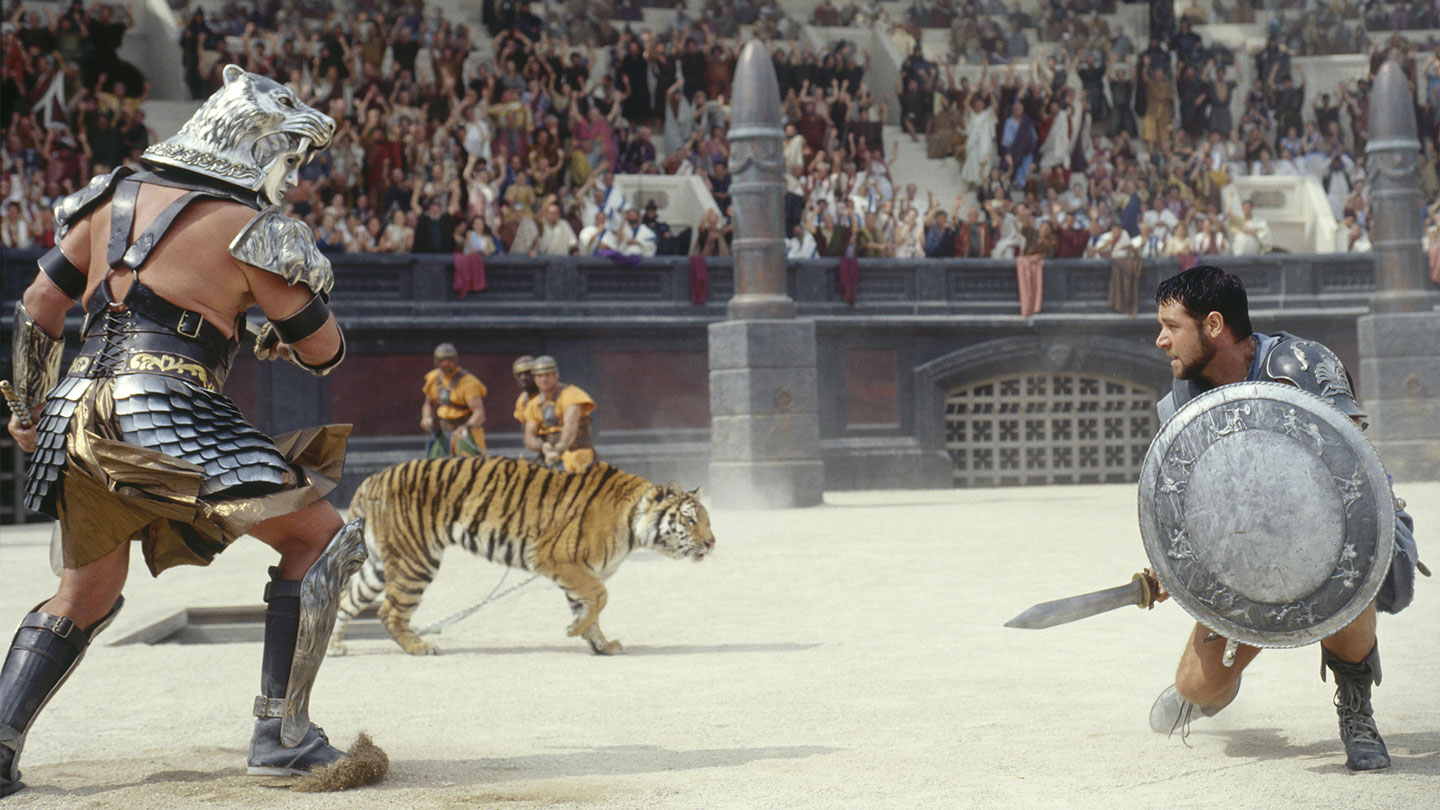
In honor of our current giveaway of the Roman-inspired Thraex XII Tactical from US Gladius, we’re taking a more in-depth look at the swords and daggers from Ancient Rome.
When it comes to swords from history, it’s hard to think of better-known weapons than those from the Roman times. Due to the countless parallels with modern day society and the drama that took place during the time, our fascination with Ancient Rome is almost as old as Rome itself.
Before we venture into the swords and daggers, we’ll start with what Ancient dRome was like.
Life in Ancient Rome
Even though the peak of Ancient Rome was way back between 753 BC and 476 AD, Roman society was extremely advanced. Most of the wealthy Romans lived extravagant lifestyles with luxurious furnishings. The poor were on the other side of the spectrum. They didn’t have such lavish lives, but they did kill some time watching things like chariot races and gladiator fights.
After a hard day’s work, Romans from all backgrounds would head over to the public baths—where they would relax, gossip, mingle, and recuperate.
Rome wasn’t all fun and games, though. The Roman Empire—and the Republic to a lesser extent—were bent on expanding its territories through conflicts and conquests. Along with the gladiator events, weapons came in handy during battles.
Types of Roman Swords and Daggers
Maybe it’s just because of the countless movies set in Ancient Rome (such as Spartacus and Gladiator), but Roman weapons are very distinct. Let’s take a look at a few.
Gladius
The gladius was the primary weapon for the foot soldiers of Ancient Rome. The name was derived from the words gladiator, which means swordsman, and gladiolus, which means little sword. In general terms, the gladius sword features a double-edged blade that’s meant for thrusting with a few slices. Its other discerning feature is a knobbed hilt, which was typically ornate.
Over time, archaeologists have found that there are several types of gladius swords.
Gladius Hispaniensis
A more recent discovery, the gladius Hispaniensis was likely the first iteration of the gladius. It was originally developed on the Spanish peninsula around 216 BC. Typical blade length was anywhere between 23.6 inches to 26.7 inches, making it one of the largest variations of the gladius. It also had a more pronounced curve in the blade.
Mainz gladius
The Mainz gladius was initially developed at the Mainz camp in modern day Germany. These were made solely for battles that took place in the northern regions of the Roman Empire.
The sword itself had a thin blade and a long point. Typical blade length was usually between 19.6 inches and 21.6 inches.
Fulham gladius
Sometimes called the Mainz-Fulham Gladius, the Fulham gladius was developed near Fulham around the time the Roman Empire made its way into Britain after 43 AD. The Fulham is almost an offshoot of the Mainz gladius because it has essentially the same design. The major difference is the Fulham gladius has an even thinner blade. The length of the blade was comparable to the Mainz gladius.
Pompeii gladius
Probably the most popular of the gladius swords, the Pompeii is named after the modern Roman city because it was found around that area. It wasn’t the smallest of the bunch and had two straight edges without a curve. The triangular point wasn’t as pronounced as the others. Typical blade length was between 17.7 inches and 19.7 inches.
Pugio
For close quarters combat, Roman soldiers also carried the pugio. This dagger was likely used for more ornate purposes because it wasn’t ideal for general use. Over the years, the pugio evolved quite a bit. Some of them featured a leaf-shaped blade or a small triangular tip.
Soldiers stopped using the pugio by second century AD, but it holds a place in culture for being used in assassinations, including the murder of Julius Caesar.
Spatha
When the gladius fell out of favor, the spatha took over. The spatha was essentially a longer version of the Pompeii gladius. Its blade was long, narrow, and straight. Typical blade length was between 28 inches and 32 inches. While the spatha was used during gladiatorial fights in Rome, the sword also found use in other cultures.




March 11, 2018 at 9:28 am
hi
October 15, 2018 at 10:20 am
hi
February 24, 2019 at 1:11 pm
Interesting… I had no idea different Roman swords were modified and or came in different categories.
February 24, 2019 at 1:13 pm
This is just fascinating. When the city of Pompeii was covered by Mount Vesuviuswere any period swords located?
February 25, 2019 at 8:37 am
Good question. I’ll have to look into it.